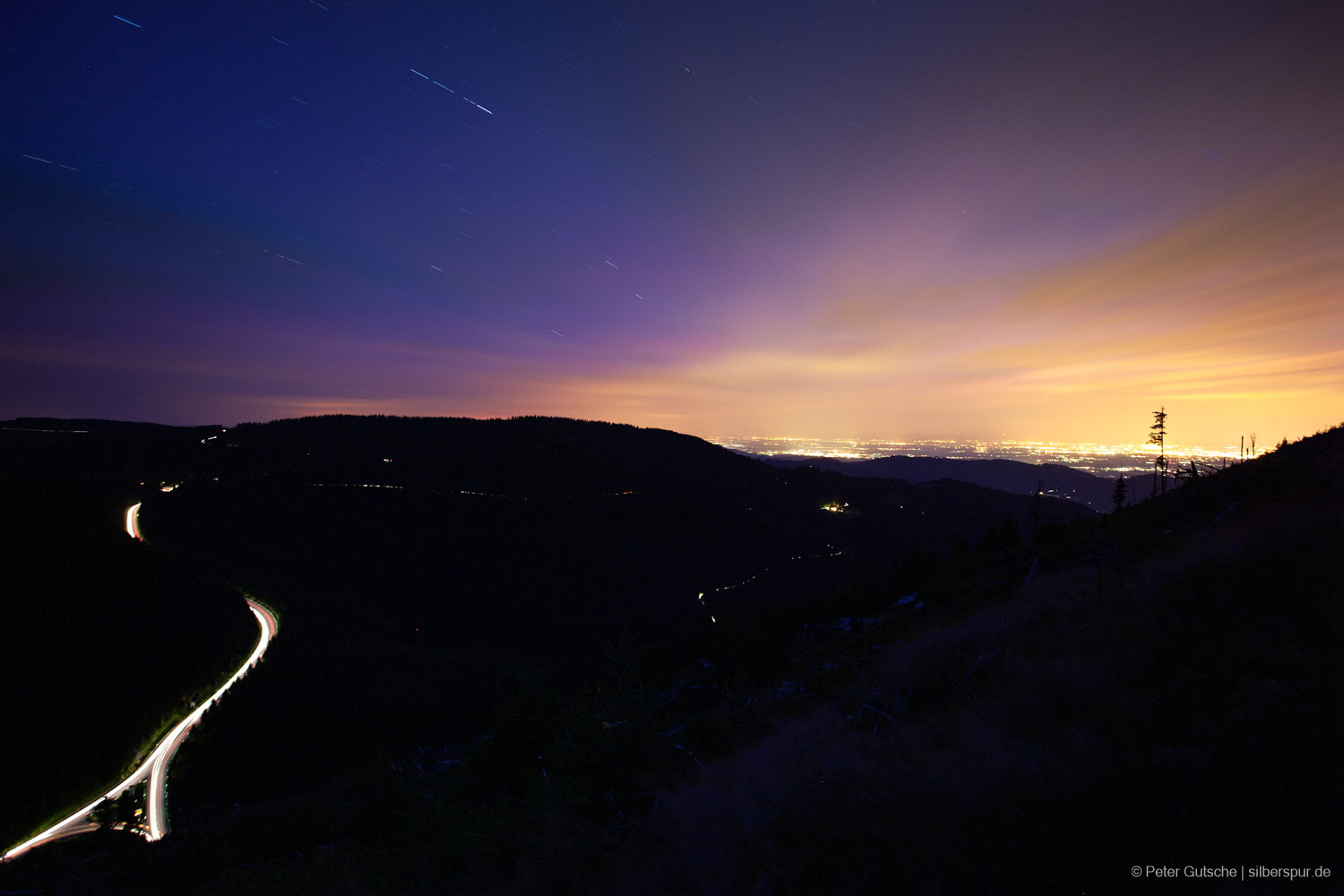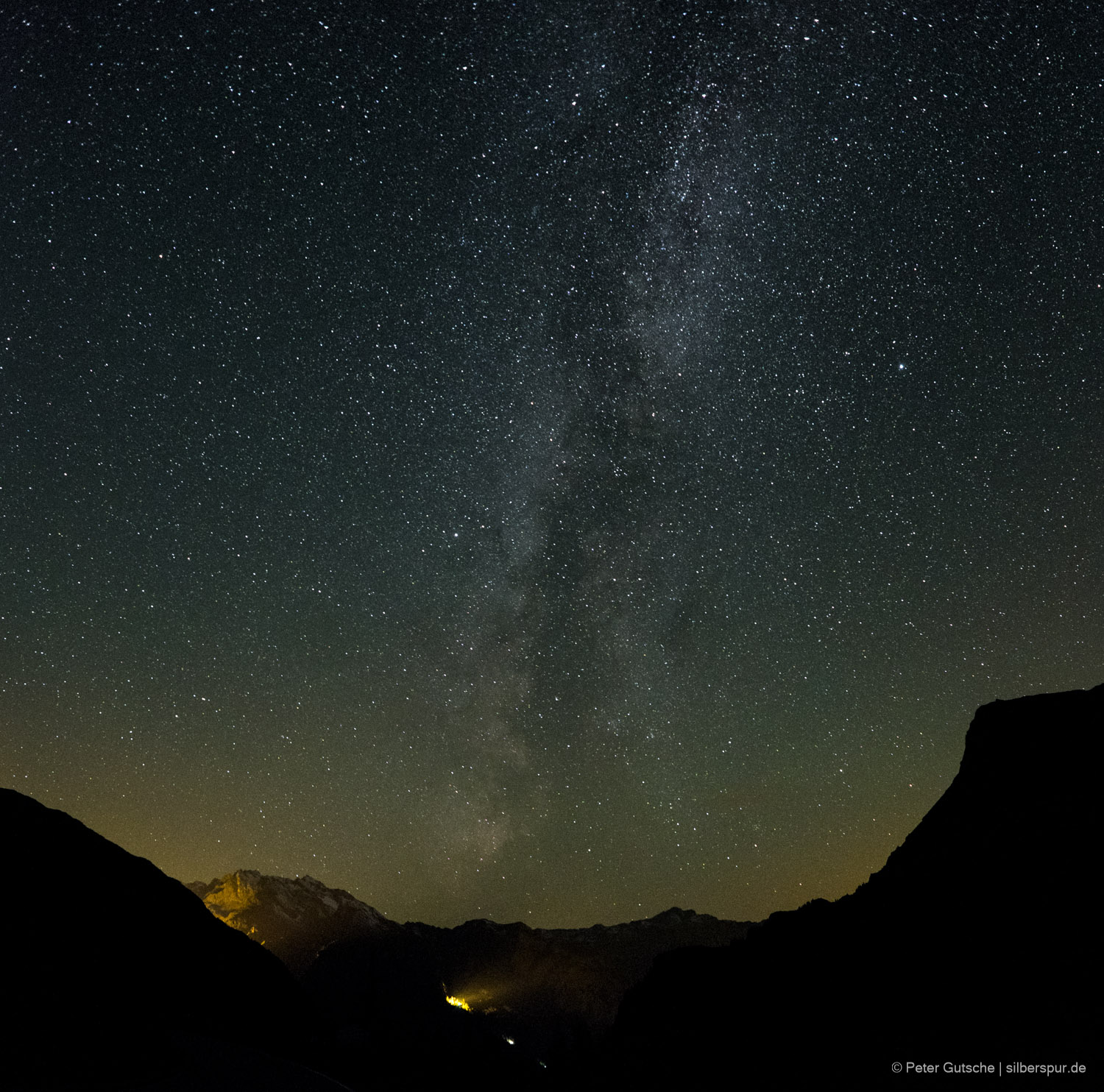The Night Sky as a Common Good - why It won't be dark at night anymore (soon) - 4
A (shorter) German Version of this blog series can be found on the German science blog „Natur des Glaubens”: Der Nachthimmel als Gemeingut.
„Before we invented civilization our ancestors lived mainly in the open out under the sky. Before we devised artificial lights and atmospheric pollution and modern forms of nocturnal entertainment we watched the stars. There were practical calendar reasons of course but there was more to it than that. Even today the most jaded city dweller can be unexpectedly moved upon encountering a clear night sky studded with thousands of twinkling stars. When it happens to me after all these years it still takes my breath away. In every culture, the sky and the religious impulse are intertwined. I lie back in an open field and the sky surrounds me. I’m overpowered by its scale. It’s so vast and so far away that my own insignificance becomes palpable. But I don’t feel rejected by the sky. I’m a part of it – tiny, to be sure, but everything is tiny compared to that overwhelming immensity. And when I concentrate on the stars, the planets, and their motions, I have an irresistible sense of machinery, clockwork, elegant precision working on a scale that, however lofty our aspirations, dwarfs and humbles us.” (Learn more)
The experience of a starry sky is one that humans have shared for millennia (Learn more). What impact would it have if the appearance of the naturally dark night sky – with its seemingly countless stars visible to the naked eye and the bright band of the Milky Way – were to be impaired? What happens to us humans if this experience is irretrievably lost for a large part of the Earth's inhabitants? What then happens to parts of the animal and plant world?
Effects of light pollution beyond astronomy and photography
There is little doubt that artificial light at night has significantly increased in recent years and will continue to do so (Learn more). Although it can be creatively used in nighttime landscape photography, as shown, the negative impacts should not be underestimated.

Quite obviously, light pollution disrupts the work of astronomers and astrophotographers. This group of people, akin to the „canary in the coal mine“ (Learn more), is the first to raise the alarm when something is amiss. Just as the sudden silence of the canary in the mine is a warning signal for something larger and more serious, the complaints of astronomers should be taken seriously. Because artificial light at night, when it exceeds a certain level, indeed has far-reaching consequences and implications.
To begin with Homo sapiens: This review (Learn more) summarizes potential health risks that may be associated with light pollution. According to the authors, it is plausible that artificial light primarily affects the circadian rhythm (Learn more) (also known as the „internal clock“) in humans. From this, the possible consequences could include: disruption of the sleep-wake cycle, impacts on the electrical activity of the brain, neurodegeneration, and other biological processes. According to the scientists, all of this could even contribute to the development of Alzheimer's disease.
Now, let's take a brief excursion into the animal kingdom.
To what extent the dung beetle Scarabaeus satyrus, which we have already encountered, is affected by increasing light pollution would be an interesting question. Further investigations would likely be necessary to determine, for example, whether the beetle's habitats overlap with areas of high light pollution. If artificial light mainly affects the near-horizon areas of the sky, the view of the Milky Way might still be sufficient, so the nocturnal orientation aid for the animals would not be impaired. However, if the light pollution is so severe that the Milky Way is no longer visible at all (as is typically the case in metropolises), this could become problematic (Learn more).
However, it is plausible to assume that light pollution significantly impacts the animal and plant world simply because it disrupts the natural transition between day and night. There is a vast amount of scientific literature on this topic. As an example, let's consider a study (Learn more) that tested the hypothesis that light pollution disturbs animal sleep, using great titmouse as a case study. The sleep behavior of animals exposed to artificial light on some nights was compared to that of a control group that always slept in darkness. Artificial light caused the test birds to wake up earlier, sleep less, and spend less time in the nesting box.
An overview article in the online magazine „The Conversation“ particularly addresses the problem that artificial light sources can act as deadly traps for insects. The insects circle the light incessantly, are unable to find food, are easily discovered by predators, and tend to exhaust themselves. Many die before morning comes. Another review article (Learn more) discusses the impact of artificial light at night on insects in greater detail. It reviews studies that examine the effects on various aspects of insect life, such as reproduction, migration, and predation.
Another article (Learn more) reports that light pollution surprisingly also affects a fish species living in shallow coastal waters in New Zealand (Learn more).
The impact of our actions on the night sky is of far-reaching significance and can be viewed within the context of the global, planetary changes we associate with the term „Anthropocene“. This term was introduced into the discussion in the early 2000s by, among others, the Dutch chemist and atmospheric researcher Paul Crutzen (Learn more), and found its way into media coverage of topics such as the climate crisis and environmental protection. It signifies that humans have become one of the most important factors influencing biological, geological, and atmospheric processes on Earth—a planetary influence. However, the proposal to formally designate the „Anthropocene“ as a new geochronological epoch was rejected by the International Commission on Stratigraphy in March 2024 for various reasons (Learn more).
What can we do?
We have seen that the natural dark night sky is a valuable asset, whose preservation is threatened by the increasingly dense population of the Earth, the growing number of artificial light sources, the use of brighter artificial lights, and the congestion of the near-Earth orbit by satellites. Shouldn't access to a natural night sky even be considered a human right that needs protection? The organization „DarkSky International“ puts it this way:
„We believe the natural nighttime environment is a basic human right — for every person for all time — celebrated in diverse communities’ cultures and heritage. Light justice requires responsible lighting and access to a night free of light pollution, for everyone.“
Indeed, several initiatives have formed in recent years with the goal of protecting this asset. Moreover, there are now successful efforts to designate certain regions of the Earth as „light protection areas“.
Light protection areas
In a light protection area, measures are taken to minimize the negative impacts of artificial light and thus protect the natural night sky. The communities within a light protection area follow specific lighting regulations and use technologies to limit the amount of emitted light. Additionally, many of these protected areas conduct public outreach to raise awareness among visitors about the issue—similar to what is done in national parks and biosphere reserves.
Originally, initiatives to protect the natural night light were driven by astronomy. This is understandable, as their daily – or should we say nightly – business involves studying the starry sky. To protect large observatories from disruptive urban light pollution, protective zones were contractually agreed upon with the relevant regional authorities. For example, a corresponding legal basis was established for the islands of La Palma and Tenerife in the Canary Islands. Since then, various countries have established light protection areas. Canada, for example, founded the Torrance Barrens Conservation Area and Dark Sky Reserve. Several European countries followed this example in the 2000s, including Scotland and Hungary.
The „light protection movement“ received further impetus at a conference in La Palma in 2007. There, the concept of „UNESCO-Starlight Reserves“ was developed, modeled after the idea of biosphere reserves , and the Starlight Foundation was established.
“An unpolluted night sky that allows the enjoyment and contemplation of the firmament should be considered an inalienable right of humankind equivalent to all other environmental, social, and cultural rights, due to its impact on the development of all peoples and on the conservation of biodiversity.”
As another important step, it was determined at the UNESCO World Heritage Conference in Brasília in 2010 that a „dark night sky for astronomy“ is also a worthy object of protection (Learn more).
Today, there are several organizations independently working on concepts for light protection and developing corresponding classification systems: UNESCO, the Dark Skies Advisory Group (Learn more) of the International Union for Conservation of Nature, and DarkSky International.
Noteworthy is the international project „The World At Night“, which specializes in producing and presenting artistically appealing photographs, films, and animations of the night sky over natural, cultural, and historical monuments worldwide.
Light protection areas in Germany
There are a few such protected areas in Germany, including the UNESCO Rhön Biosphere Reserve, which has been designated a „Star Park“ by the International Dark Sky Association. An example of how light protection is implemented in this region: The municipalities located within the Rhön Star Park have voluntarily committed to reducing public lighting as much as possible and adjusting it to actual needs. Measures include targeted light direction (instead of emitting large amounts of light upwards into the sky), warm light colors (instead of bright blue), adjusted light quantities, and needs-based and targeted lighting. To support the municipalities, as well as local businesses and private households in planning and implementation, extensive informational material is offered free of charge. For instance, one brochure explains that solar lights in gardens – as popular as they are – are usually intended as decoration rather than as light sources and can cause additional stress for insects.
Further light protection areas in Germany include: the Eifel Star Park, the Winklmoosalm Star Park near Reit im Winkl, the Westhavelland Nature and Star Park, and Germany's first „Star City“, Fulda. Planned and partly in the project phase are the Schwäbische Alb Star Park and the Nossentiner/Schwinzer Heide Nature Park.
A well-known light protection area in France is the mountain region around the Pic du Midi in the Pyrenees, which has been designated an „International Starry Sky Reserve“ by the International Dark Sky Association. A unique approach is being taken in the metropolis of Strasbourg. In 2022, the city began reducing street lighting where possible without compromising traffic safety. This gradual approach aims to establish more sustainable and energy-efficient lighting.
Perhaps humanity will manage to preserve the dark night sky. Naturally dark skies, like clean air and clean water, are a resource to which everyone has a right. In the future, no one should be deprived of the experience of the night sky, which Carl Sagan described so wonderfully (Learn more).
“Even today the most jaded city dweller can be unexpectedly moved upon encountering a clear night sky studded with thousands of twinkling stars. When it happens to me after all these years it still takes my breath away.”

Go to previous part of the blog series